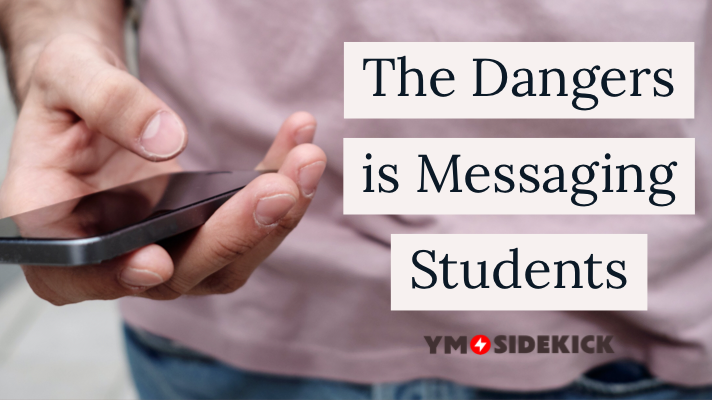The Dangers of Messaging Students
Students love their phones. That’s a no-brainer. And, probably the best way to get in touch with students (or anyone for that matter) these days are through their phones. But rather than actually talking to each other, text messaging is usually the first option people take in trying to reach students. In fact, I did an unscientific poll recently on Facebook and the strong majority of people, adults included, said they would rather text than call someone.
 Although messaging students is easy and you are likely to get a response from them quicker than if you emailed, sent them something on Facebook or Twitter or, heaven forbid, call them, there are some potential dangers to it as well.
Although messaging students is easy and you are likely to get a response from them quicker than if you emailed, sent them something on Facebook or Twitter or, heaven forbid, call them, there are some potential dangers to it as well.
Dangers?!? What possible dangers are there in messaging students?
- Comments get taken out of context or intent. Sometimes, it is hard to read the intent of the writer. Unless it’s in all CAPITAL letter or in bold text (is there bold in texting??), words can get lost in translation. When that happens, students can take something you said wrong and it damage the relationship.
- There are no private conversations. When you hit “send”, you leave a record of what you say all that time. That is not a bad thing as we should be above reproach all the time in what we say. But, what is said in private, individual conversation has a specific intention for that specific person. When you text a student something, that person can then share it with someone else. Again, they can take it out of context and they can tell others what you think about a subject for their purposes only and may put you in a tough situation of explaining why you said such and such. Think very clearly about what you are texting before you hit the send button.
- Conversations with the opposite sex should be limited, if any. I know it happens because students will find out your cell number from a flier or another student. But, if a student of the opposite sex texts you, it should be a very brief, with a simple response and no engagement of personal matters should be discussed. The more engagement you have with a person from the opposite sex, the more likely that a connection and chemistry that begins to form that may draw you and this student together in an unhealthy way. Simply keep it short and/or redirect to a leader of the same sex as the student.
As “Debbie Downer” as this post seems to be, I am not trying to scare you off from texting students. After all, texting students is a great way to engage someone in a conversation and let them know that you are thinking of them before a big game, concert or test. It is just that with every good and productive tool we have to reach out and minister to students, it can get us in trouble if we don’t use it the right way. That is why it is so important understand the potential dangers so we don’t make some easy to avoid mistakes when texting students.
So, what do you think? How do you protect yourself when texting students? Share your thoughts and experiences below.
Want to learn digital tools to expand your reach in ministry this year?
Join the Digital Bootcamp Facebook Group!


Hey, any thoughts on texting software? Our middle school and high school ministries use a service by YS. Do you have any experience with that? Frequency, dangers…
Great question David. I have a little experience with it as we sometimes use our Church Database service (CCB) to group text and I’ve used GroupMe before. I think any of them are good, especially the YS one that has good reviews. But, I think with every form of communication, the frequency is the key. If you group text too much, it begins to fall on deaf ears and they delete without even knowing. I would use Group texts for special events, changes in an event or on trips communicating with parents. Other than that, I try to limit what I’m communicating on Group text.